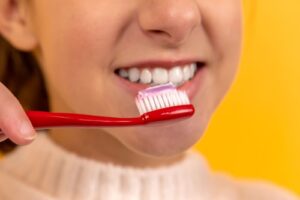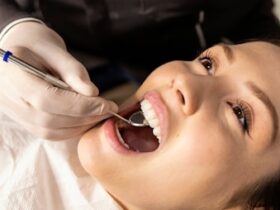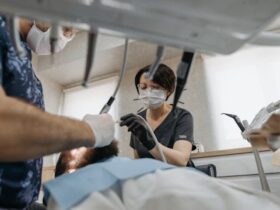
Brushing teeth seems super simple, but it’s actually one of the easiest habits to mess up without realizing it. Some people press way too hard and wear down their enamel. Others go too easy and miss spots, which lets bacteria build up. Both can lead to bigger problems later.
Teeth brushing isn’t about how strong your arm is or how fast you can finish. It’s about being thorough and gentle. Even with the best toothbrush, it’s possible to brush the wrong way and not even know.
Signs You’re Brushing Too Hard
If the bristles on your toothbrush always look smashed after just a week or two, that’s a huge red flag. A toothbrush is meant to glide over your teeth, not scrape them like a wire brush.
People who brush too hard often notice their gums pulling back, which makes teeth look longer. That’s called gum recession. When this happens, the sensitive part of the tooth under the gum can get exposed, and it starts to hurt when eating or drinking hot or cold things.
Hard brushing also wears away the enamel. That’s the hard, outer layer of your teeth that protects everything underneath. Once enamel is gone, it doesn’t grow back.
Signs You’re Not Brushing Enough
On the other side, brushing too softly or too quickly can leave behind plaque, which is a sticky layer of bacteria. Plaque leads to bad breath, yellow teeth, and eventually cavities. If your teeth still feel fuzzy after brushing, or if your breath starts to smell bad fast, you’re probably not brushing well enough.
Another sign is bleeding gums. People think this means they’re brushing too hard, but sometimes it’s actually from not brushing enough. When plaque builds up along the gum line, it can cause swelling and bleeding—even from light brushing.
How to Brush Just Right
The best way to brush is to use small, gentle circles—not big scrubbing motions. Focus on each tooth and don’t rush. Two minutes is the right amount of time, but it should be quality brushing, not just waving the brush around.
Use a soft-bristled toothbrush. Some people think firm bristles clean better, but those are too harsh. Soft bristles are better for your gums and still do a great job.
And yes, pressure matters. Think of it like brushing a grape without breaking the skin. You want to clean the surface, not crush it.
If brushing the right way still feels weird, it might help to visit a dentist who can walk you through it. You can even look for a place like Precision Dental that explains proper brushing habits and spots damage early. It’s a smart move before small issues turn into bigger ones.
Don’t Forget About Flossing and Other Tools
Brushing alone doesn’t get between your teeth or under your gums. That’s where flossing comes in. It reaches the tight spots where food and plaque like to hide.
There are also tools like water flossers or interdental brushes for people who hate regular floss. Mouthwash helps too, but it doesn’t replace brushing or flossing. It’s just one more step to help your teeth and breath stay fresh.
When to Get Help From a Dentist
If teeth hurt when brushing, if gums bleed all the time, or if breath smells no matter what—those are signs something’s off. Even if brushing feels fine, a dentist can spot problems early.
Some people only go when they’re in pain, but by then, damage is usually worse. Regular checkups catch issues before they grow into something expensive or painful.
Also, dentists can tell just by looking at your teeth if you’re brushing too hard or not brushing enough. They’ll usually show you how to fix your technique without making you feel bad about it.
Common Myths That Confuse People
A few wrong ideas get passed around all the time, and they mess with good habits. Here are some of the big ones:
- “Harder brushing = cleaner teeth” – False. It just damages enamel and gums.
- “If gums bleed, brushing is too rough” – Not always. It could mean plaque has built up from not brushing well.
- “Whitening toothpaste fixes yellow teeth” – These can be super abrasive. Sometimes they do more harm than good.
- “Mouthwash is enough” – Definitely not. It helps, but it can’t replace proper brushing and flossing.
What If You’ve Already Been Brushing the Wrong Way?
Don’t stress. A lot of people only learn this stuff later. If there’s already gum damage or enamel wear, dentists can help. They can also suggest products like toothpaste for sensitive teeth or softer toothbrushes to make things easier.
The most important thing is to start brushing the right way from now on. Being consistent and careful makes a huge difference over time.
Key Things to Remember
- Brushing should be gentle, not forceful.
- Two full minutes, twice a day is the goal.
- Soft bristles are better than firm ones.
- Don’t skip flossing—brushing alone isn’t enough.
- See a dentist regularly, even if nothing hurts.
Brushing your teeth the right way sounds boring, but it’s one of the easiest ways to avoid pain, dentist bills, and feeling gross. A little effort now saves a lot of stress later.



